Welcome to Ceramic Review
Ceramic Review is the magazine for contemporary and historical ceramics, ceramic art and pottery.
Ceramic Review Issue 334
July/August 2025
Ceramic Review is the magazine for contemporary and historical ceramics, ceramic art and pottery.
July/August 2025
The Oriental Ceramic Society is celebrating its centenary this year; Corinne Julius explores its history and impact in both the East and the West
Many in the world of contemporary ceramics happily acknowledge the influence of Asian ceramics on their work or on their collecting preferences, be it form, glazes or decoration. Today interest in Asian ceramics both historical and contemporary is considerable, boosted by the phenomenal growth in the Chinese economy since the early 1980s and the concomitant arrival on the international market of Chinese collectors, dealers, auction houses and museums.
Collectors and makers in the UK are particularly lucky to have access to extraordinary public collections of what has historically been known as ‘Oriental Ceramics.’ That ‘luck’ however is no such thing, but rather the result of the work of the Oriental Ceramic Society (OCS) now a leading global institution for the study of Asian art and, in particular, ceramics, which this year celebrates its centenary.
SEEKING ENLIGHTENMENT
The OCS was founded by 12 good men and true – three museum ceramic specialists, seven collectors and two scientists (both collectors) – who had a fascination with Oriental ceramics. No contemporary makers were involved, though the president, George Eumorfopoulos, along with several other members collected Bernard Leach and William Staite Murray, both of whom were influenced by Oriental ceramics. They, along with Shōji Hamada, visited Eumorfopoulos’ home, where they were able to handle his collection at a time when there were relatively few examples of Oriental ceramics in public collections. There was also a dearth of information or knowledge available, even to those seeking enlightenment. The interest was fed in 1920, by the discovery of Tang mortuary wares during the construction of railway cuttings in China.
The first rule of the OCS, drawn up at the inaugural meeting on 31 January 1921, stated that: ‘The object of the Society shall be to widen appreciation and to acquire knowledge of Eastern Ceramic Art by periodic meetings for the purpose of discussion.’ The members, who possessed a knowledge of East Asian art that was probably unsurpassed in the rest of Europe, met monthly by rotation in each other’s drawing rooms to handle, discuss and explore objects from their collections. The papers presented by members were wide ranging, scholarly and painstaking, with careful consideration given to the dating of objects, original texts, inscriptions, kiln sites, as well as scientific evidence.
To overcome the lack of work in museums co-founder Bernard Rackham, a curator at the V&A, organised for OCS members to show objects from their collections in two cases in the Loan Court of the V&A to, ‘supplement the resources of the Museum by putting before the public carefully selected specimens of different types of Eastern ceramic art.’
VALUABLE CONTRIBUTION
The original intention was to keep the Society small to allow for ‘fruitful discussion and suggestive observations,’ but by 1 October 1933, membership was opened to all for an annual subscription of two guineas, for which members were entitled to a copy of its journal Transactions and to attend four meetings in London. The Council even included female collectors like Mrs Sedgwick. (Interestingly women are now in the majority on the governing Council.) ‘Early and founder members contributed to the study and understanding of the field, especially of pre-Ming ceramics, by systematic study,
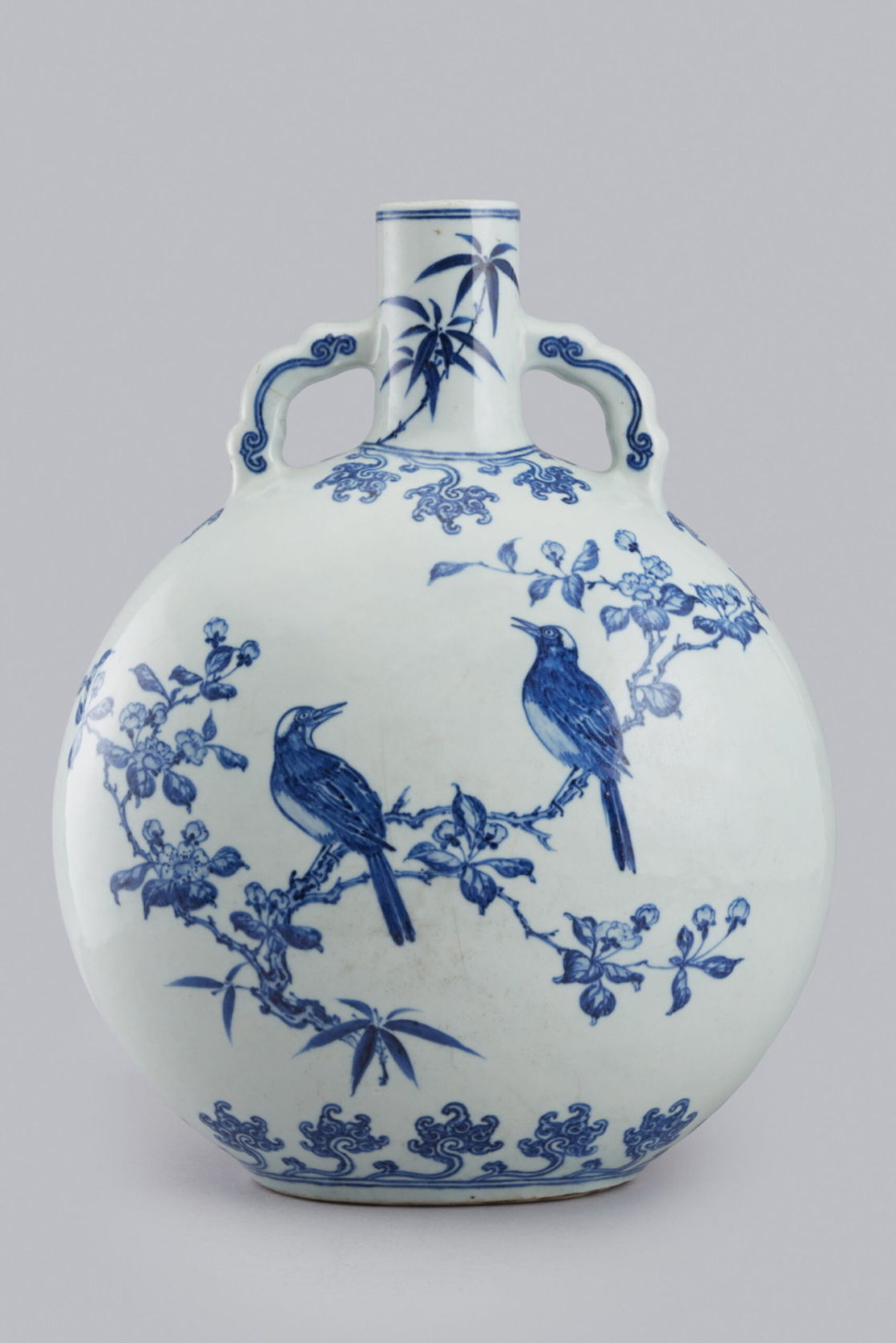
Underglaze blue porcelain moon flask, Qing dynasty, 1722-1735
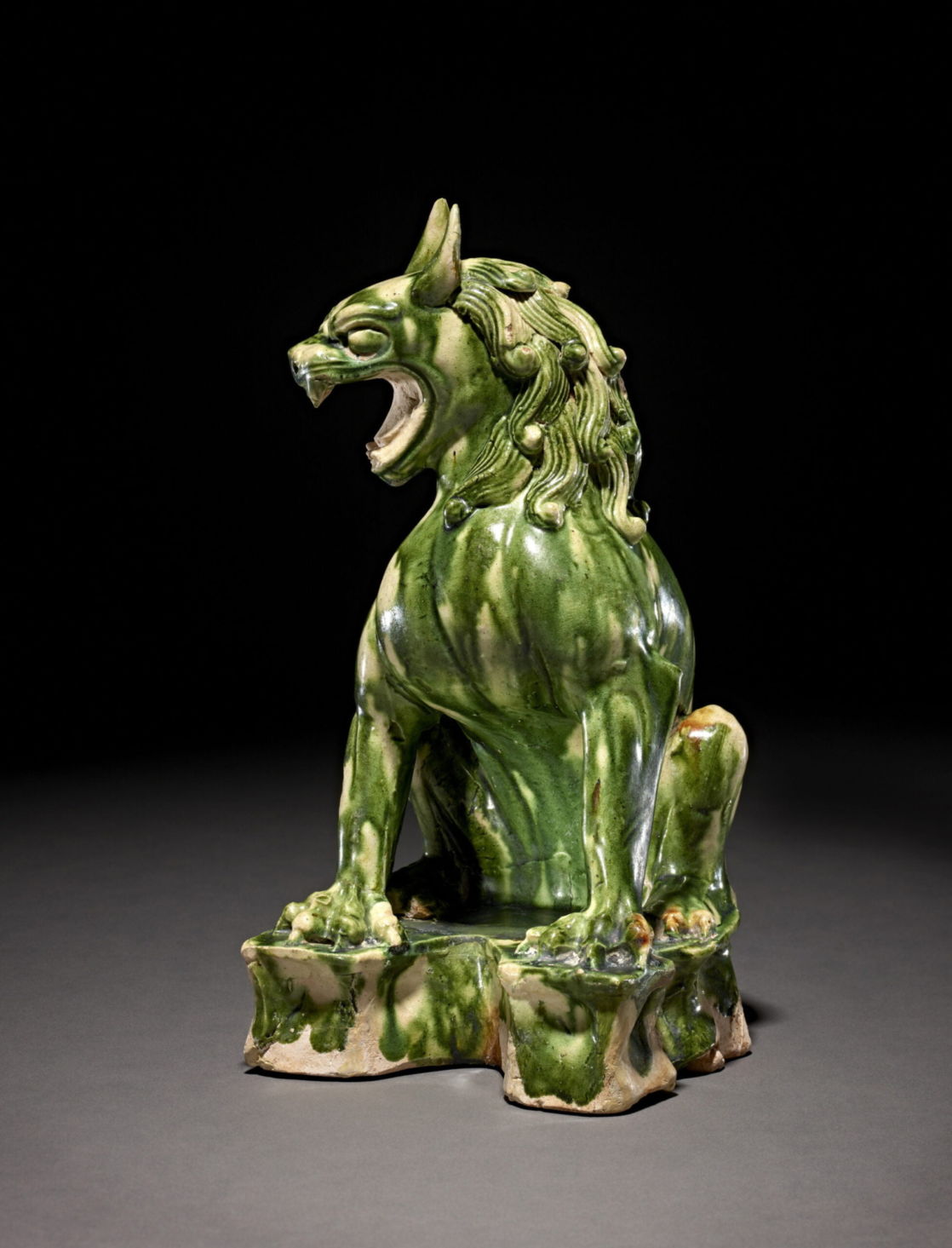
talks and publications (including the scholarly journal Transactions of the OCS),’ says Sarah Wong, a director of Eskenazi Limited and the curator of the Society’s centennial exhibition Collectors, Curators, Connoisseurs: 100 Years of the Oriental Ceramic Society. ‘They were prompted by the desire to learn for themselves and to raise public awareness.’
The OCS pursued its goals energetically, coming up with the idea for a major exhibition at the Royal Academy (RA). The International Exhibition of Chinese Art, 1935-6, was a sell-out blockbuster, with queues around the block. Almost half of the works on display came from the Society members’ own collections. Council member Percival David (a member of the Sassoon family), the originator and director of the exhibition, displayed 350 items from his personal treasure trove and his collection is now on permanent display at the British Museum. The RA exhibition established criteria for collecting (and for good taste) in both the East and the West.
The Society enabled close relationships between collectors and curators and numerous OCS members have left their collections to UK institutions either as direct bequests or sold at preferential rates. The Asian collections in many UK museums, including the British Museum,
the V&A, the Fitzwilliam and the Ashmolean would be unrecognisable without the collections that once belonged to OCS members.
The show at the RA was remarkable in exhibiting across a range of Chinese cultural items including bronzes, calligraphy and paintings – key items from a Chinese cultural perspective – as well as ceramics never before seen in Europe. It was a triumph of cultural diplomacy, a good example of soft power, with OCS members successfully getting the Chinese government to send a number of works. Negotiating with the Japanese was more difficult as Lord Lytton, the exhibition’s chair, had been responsible for getting the Japanese censored by the League of Nations. In retaliation the Japanese government refused to play ball, however the Imperial Household did send their treasures.
ACADEMIC LINKS
Although most OCS members focussed on China, there were also specialists in the Middle East and Japan. (The name Oriental has been retained as it is the historical appellation.) Members wrote and importantly circulated papers on specialist subjects, continuing to curate exhibitions both specialist and popular, briefly in their own space and subsequently at the Arts Council. The 1971 Jubilee exhibition, whose catalogue included significant elements on provenance was widely lauded by the press with some 28,000 visitors. Post-exhibition the society’s membership grew to 1,000, including 600 overseas members.
Between the 1950s until the late 1970s, few contacts between British and Chinese ceramic scholars were possible, but the OCS was an early advocate of strong academic links with Chinese ceramics experts, and especially in the late 20th century pioneered specialist travel to China and visits and scholarships to the UK by Chinese curators.
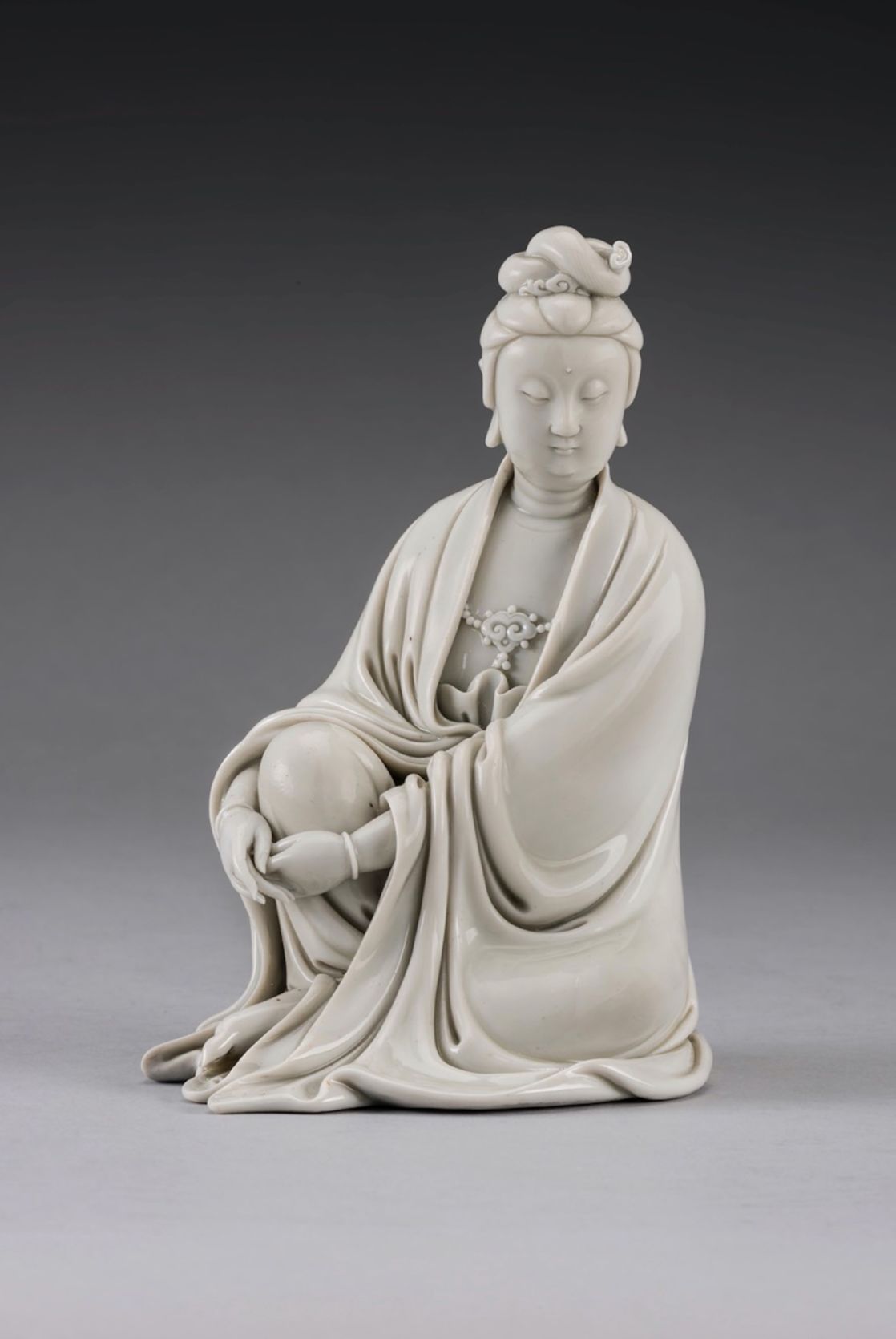
To celebrate its centenary, the OCS is mounting a new exhibition that brings together for the first time, over 100 rare objects dating back 3,000 years. It illustrates the society’s history and includes archival material, ceramics, bronzes, jades, sculptures and works of art from some
of the most outstanding collections in the UK, including the V&A, the British Museum and from private individuals. It demonstrates the close and fruitful relationship between OCS collectors, curators and dealers.
Exhibits include an eighth-century Chinese figure of a roaring lion owned by Henry Oppenheim, viewed, handled and discussed at an early OCS meeting, and a 1,000-year-old, green-glazed stoneware meiping vase exquisitely decorated with peonies, part of a group of Song dynasty wares from the Cizhou kilns that early OCS members were intrigued by and collected. It belonged to the first president of the Society, George Eumorfopoulos and was previously exhibited in the RA exhibition of 1935-6 and the OCS Jubilee exhibition in 1971.
Another key exhibit is the shallow porcelain ‘Dragon and pearl’ dish with applied, slipped and incised decoration and cobalt-blue and transparent glazes from Sir Percival David’s collection of Yuan dynasty porcelain from Jingdezhen, which was the beginning of the blue and white porcelain in China as we know it.
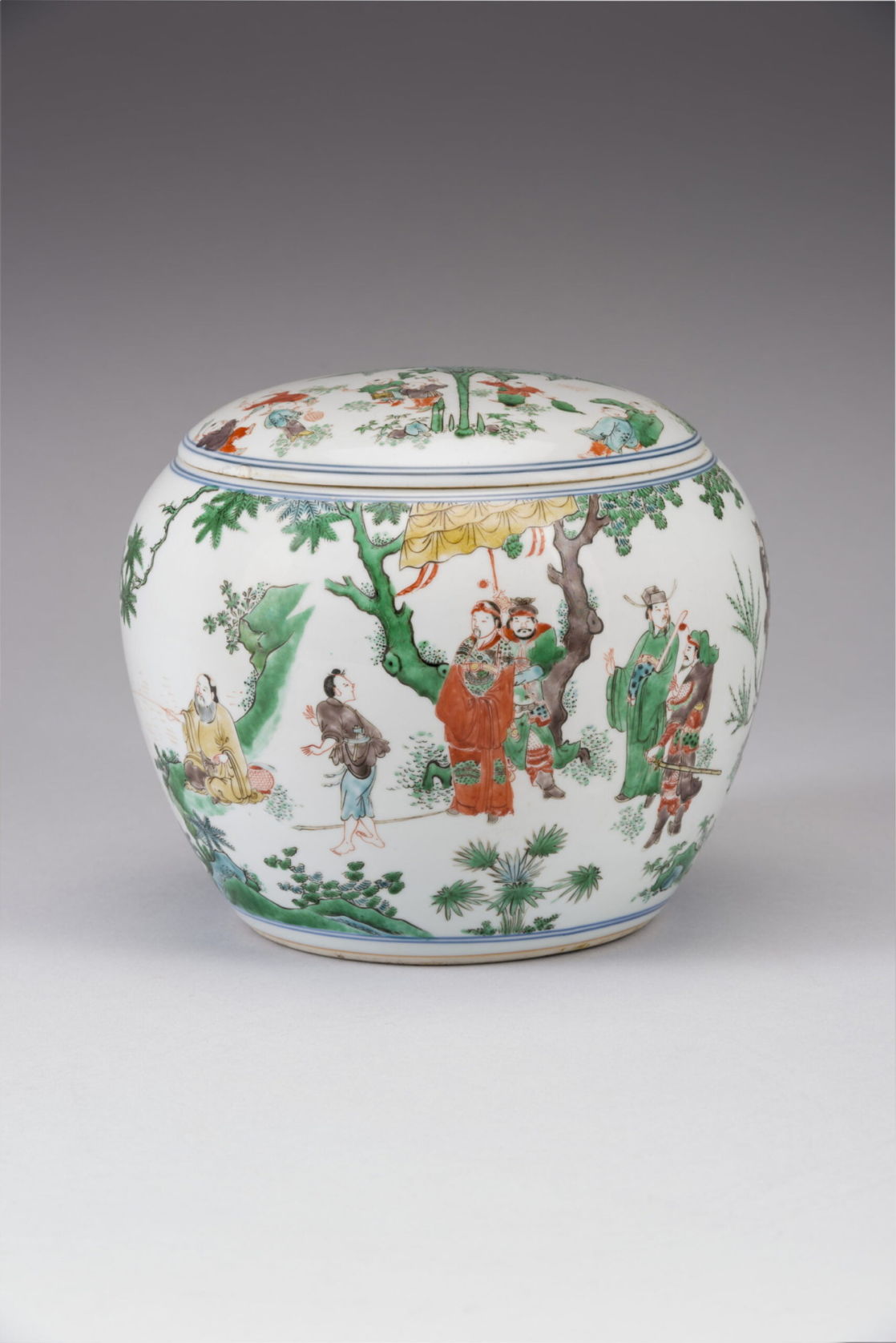
Underglaze blue and polychrome painted porcelain jar and cover, Ming dynasty, 1628-1644
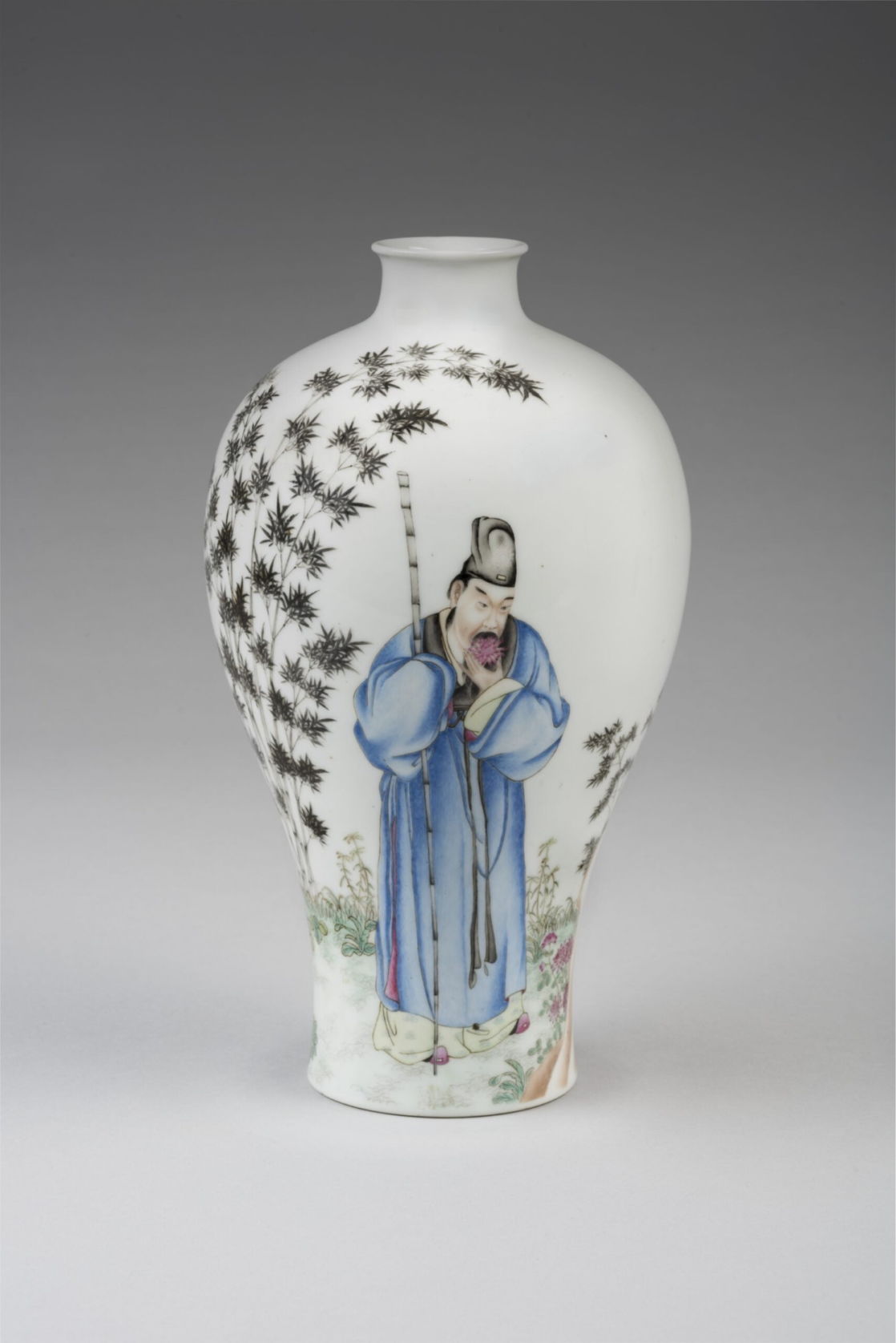
Fencai porcelain vase, meiping, depicting the poet Tao Yuanming, Republican period, c.1945
More modern exhibits include a 1930 enamelled porcelain plaque of a 20th-century Chinese woman looking into a mirror in which is reflected a snarling tiger in mid leap, by Wang Qi from Jingdezhen. The reflection of the tiger may refer to the changing role of women in China in the early 20th century and the perception of strong or powerful women as ‘tigers’.
These days many of the senior members of the OCS are women and it has an increasingly international membership and global reach. Over the next 100 years it seeks to continue its encouragement of scholarship and the appreciation and dissemination of knowledge of extraordinary Eastern ceramics by expanding its international role.
For details visit orientalceramicsociety.org.uk
Collectors, Curators, Connoisseurs: 100 Years of the Oriental Ceramic Society, Brunei Gallery, SOAS, 15 October – 11 December; soas.ac.uk/gallery
Accompanying publication: Collectors, Curators, Connoisseurs: A Century of the Oriental Ceramic Society, 1921-2021, edited by Sarah Wong and Stacey Pierson